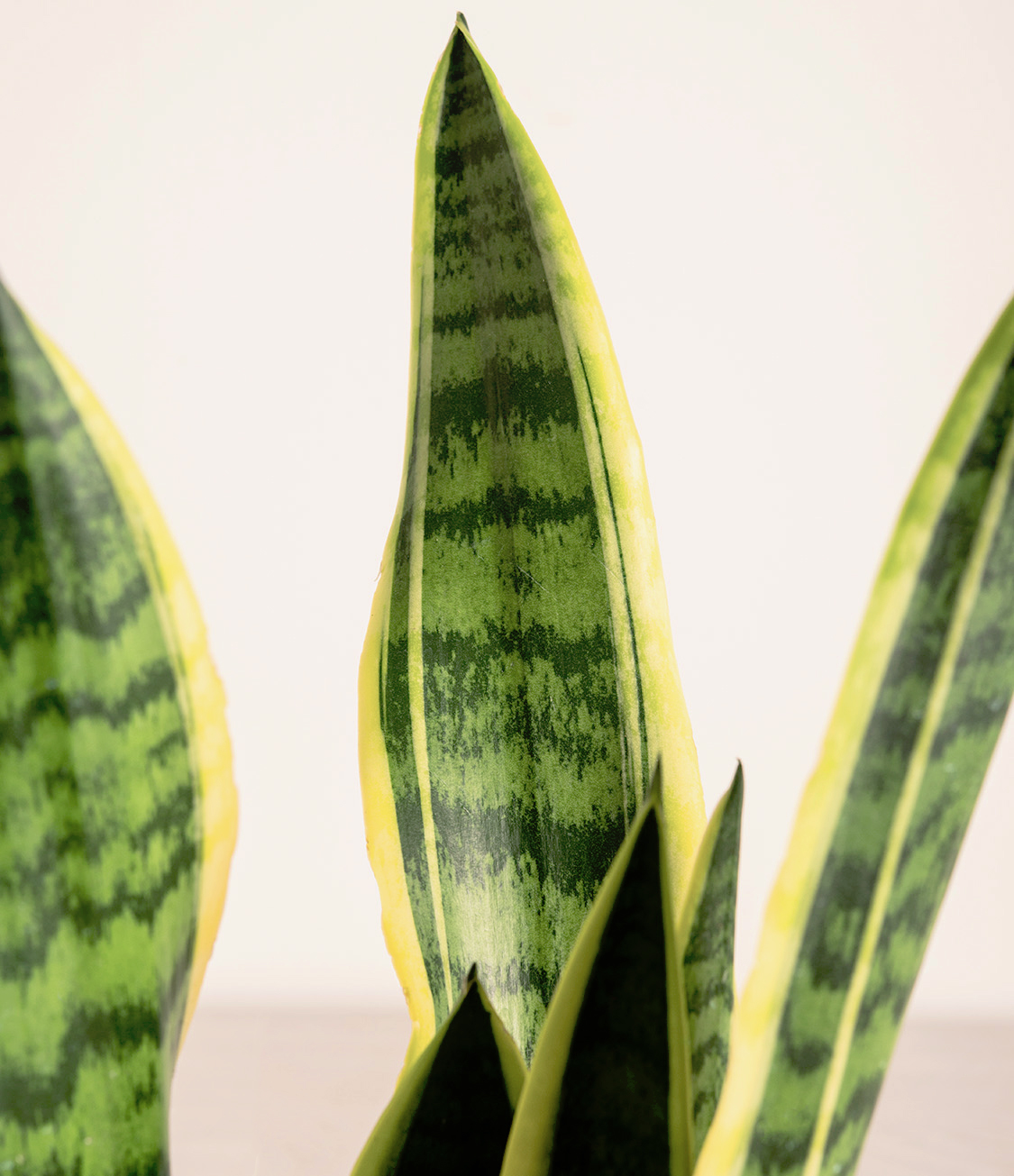How to Care for a Golden Sansevieria (Snake) Plant
Shop this plantAbout Golden Snake Plant
Originating from the desert lands of Africa, Asia, and Madagascar, Sansevieria is the most resilient of all houseplants and thrives under any condition - including the most forgetful of plant lovers. Its tall and narrow sword-shaped leaves wear a vibrant green edged with streaks of sunshine, ever so elegantly stealing the show. Not only is it easy on the eyes, the snake plant is a master air-purifier, removing allergens and toxins from the air we breathe, so keeping it goes a long way for our health.
Other common names
- Dracaena trifasciata
- Mother-in-law’s tongue
- Saint George’s sword
- Viper’s bowstring hemp
- Sansevieria
How Often Should I Water My Golden Snake Plant?
Golden Snake Plant Light Needs
Golden Snake Plant Plant Care
How Big Do Golden Snake Plant Plants Grow?
Temperature & Humidity
The golden snake plant, a lover of tropical warmth, adapts well to a range of humidity levels, thriving in conditions from 40% to 60%. This plant has evolved to handle drought in its native habitat, so it can tolerate lower humidity levels without issue. While it does appreciate a humidity boost, it's not overly demanding about moisture. It's important, however, to avoid overly dry environments, especially during winter when indoor heating can significantly dry out the air. To maintain a comfortable environment for the plant, grouping it with other plants or using a pebble tray can be effective in subtly increasing the humidity, contributing to its health and vitality.
Are Golden Snake Plant Toxic for Pets & Kids?
Troubleshooting Common Problems with Golden Snake Plant
Frequently Asked Questions about Golden Snake Plant Plant
- What are other common names for a snake plant?Colloquially, you’ll probably notice there is no singular name for the Sansevieria — some are scientific and refer to specific varieties, some have origins in folklore, others are critiques of your in-laws. The name “Sansevieria” itself, has come into question in recent years as molecular discoveries have recategorized it under the Dracaena genus. Below are just a few examples of snake plant names. *Snake plant. Easily the most common name for the Sansevieria and its varieties, this refers to the chevron or rosette patterns that can look like coils, as well as the sharp points at the end of the leaves. *Dracaena trifasciata. This is the updated common scientific name for the plant. *Dracaena trifasciata ‘Laurentii’. The ‘Laurentii’ variation of the plant has yellow edges with horizontal stripes. *Dracaena trifasciata ‘Hahnii’: This is a shorter version of the plant that is more shrub-like, at about six inches in height. “Hahniii” refers to its resemblance to a bird’s nest. *Mother-in-law’s tongue. One of the cheekier names for this plant is a reference to the sharp words delivered by the least favorite mother-in-laws among us. *Saint George’s sword. Especially upon growth, the plant begins to take the shape of a great sword with a sharp point to match. *Viper’s bowstring hemp. So-called because the tough fibers of the plant have historically been used to make bowstrings.
- What are the benefits of having snake plants?Like all houseplants, a snake plant emits oxygen and can modestly improve air quality. Several modern studies have demonstrated that both the active caring for plants — think: all those happy gardeners in your life — and the aesthetics of them can improve mental health, lifting moods and reducing anxiety. There's a good reason many hospital waiting rooms have plants, after all. Largely, snake plant benefits are the benefits of all plants.
- Do snake plants need direct sunlight to grow?Does a snake plant need sunlight to grow? As with all plants, yes—but just barely. Although insufficient light can be a problem for snake plants, this is generally a plant that can hide in the shadows and still survive. (Although, in order to thrive, it will require some occasional bright light, ideally exposed to a west-facing window.) It is susceptible to sunburn, so place it near a window with sun shades to lessen the harshness of the direct sunlight. Rotate the plant about a quarter turn upon watering for even distribution of light.
- Is a snake plant easy to take care of?How do I care for a snake plant? The key is consistency: Find a spot in your home that gets morning, indirect light, and be careful not to overwater them. Occasionally monitor the leaves for discoloring or drooping; otherwise, consider this the blessed well-behaved child in the plant family. Short of having a plastic plant, Sansevieria care is among the least stressful.







